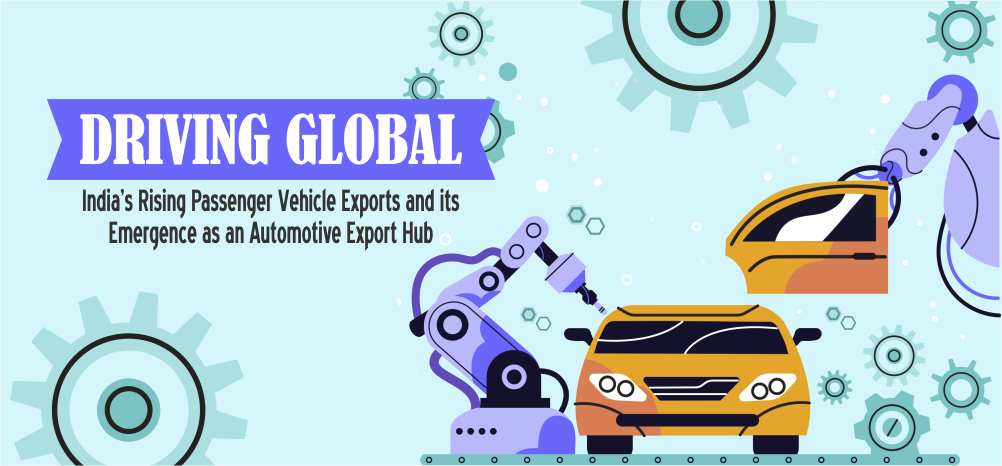The services sector remains the engine of growth for India’s economy, contributing around 55% to the country’s Gross Value Added (GVA), up from 50.6% in FY14, with an average growth of 8.3% since FY23. It has consistently ranked first in FDI inflows, according to the Department for Promotion of Industry and Internal Trade (DPIIT), reflecting its significance as a key driver of economic expansion. The sector provides employment to a substantial portion of the Indian population and continues to be the highest employment generator in the country.
In FY26 (April-June 2025), the services sector recorded strong performance, supported by robust export demand and record hiring. India’s services exports stood at approximately Rs. 11,00,517 crore (US$ 128 billion), while imports were Rs. 5,56,128 crore (US$ 65 billion), yielding a services trade surplus of Rs. 5,44,389 crore (US$ 63.53 billion), up from Rs. 4,65,639 crore (US$ 54.34 billion) in FY25 (April-July 2024). India has also climbed to 39th position out of 133 economies in the Global Innovation Index (GII) 2024, highlighting its growing strength in knowledge and innovation.
Employment generation in the sector continues to outpace manufacturing, with nearly three jobs created in services for every one in manufacturing. The sector currently employs about 182 million people, with trade, transport, education, finance, and healthcare being major contributors. Between April 2000 and June 2025, India’s services sector attracted FDI inflows of Rs. 10,46,481 crore (US$ 122 billion), with Mauritius emerging as the top investor, followed by Singapore, the USA, the Netherlands, and Japan.
The financial services segment has witnessed remarkable growth. Deposits across all scheduled banks surged to Rs. 2,39,99,113 crore (US$ 2,800.69 billion) as of August 2025. India’s fintech sector ranked third globally in H1 2025, raising Rs. 7,618 crore (US$ 889 million), with Bengaluru attracting 55% of these investments. The fintech adoption rate in India stands at 87%, significantly above the global average of 67%, reflecting the country’s rapid digital financial integration.
Telecom and IT services remain key pillars of the sector. India’s telephone subscriber base stood at 1.21 billion in June 2025, with internet subscribers reaching 979 million, including 44.6 million wired and 935 million wireless users. The wireless subscriber base of major operators included Jio at 483 million, Bharti Airtel 294 million, Vodafone Idea 127 million, and BSNL 29 million. The IT & BPM sector continues to grow strongly, with exports rising 12.48% in FY25 to Rs. 19,19,456 crore (US$ 224 billion), of which IT services accounted for over 65%. The sector is expected to add 1,26,000 net new employees in FY25, taking the total workforce to 5.8 million.
Healthcare and digital services have emerged as significant growth drivers. The Indian healthcare sector is projected to reach Rs. 5,467,022 crore (US$ 638 billion) by 2025, growing at a 22.5% CAGR over the past seven years. Telemedicine alone reached Rs. 31,191 crore (US$ 3.64 billion) in 2025 and is expected to grow to Rs. 90,660 crore (US$ 10.58 billion) by 2030. Initiatives such as the Ayushman Bharat Digital Mission (ABDM), the Digital Health Incentive Scheme (DHIS), and AI integration in healthcare are driving efficiency, accessibility, and affordability in the sector. AI in healthcare is expected to contribute Rs. 2,18,325-2,61,990 crore (US$ 25-30 billion) to India’s GDP by 2025.
India’s digital infrastructure is also expanding rapidly. The Union Budget 2025-26 allocated Rs. 22,000 crore (US$ 2.6 billion) to the BharatNet project, aiming to extend broadband connectivity to government-run schools and primary healthcare centers in rural areas. The country’s 5G subscriber base is projected to surge to 980 million by 2030, with average monthly data usage reaching 62 GB per smartphone. Data centers are seeing high demand, with 407 MW of IT capacity absorbed and 191 MW added across key cities, driven by cloud computing, big data, IoT, AI, e-commerce, and digital transformation.
Education and research infrastructure continues to expand, with 23 Indian Institutes of Technology (IITs), 21 Indian Institutes of Management (IIMs), and 20 All India Institutes of Medical Sciences (AIIMS) operational by June 2025, strengthening India’s human capital for services and technology.
Tourism, hospitality, and sustainable sectors are contributing to exports and employment. India’s tourism and hospitality sector may earn US$ 50.9 billion in visitor exports by 2028, while the sustainable tourism market is projected to grow from Rs. 317 crore (US$ 37 million) in 2025 to Rs. 1,851 crore (US$ 216 million) over the next decade.
The government continues to support the services sector with policy interventions such as the Services Exports from India Scheme (SEIS), providing duty scrip credit of 3-5% for eligible exports, and GST 2.0, which simplifies compliance and lowers costs for essential services. The IT & BPM sector is poised for further growth with planned deployment of ~10 cloud platforms across key industries, enabling Indian companies to strengthen global competitiveness.
Corporate India remains optimistic, with annual salary hikes projected between 6% and 15% in 2025, depending on industry, role criticality, and niche skills. The software services sector alone is expected to grow from Rs. 13,55,530 crore (US$ 158 billion) in 2025 to Rs. 16,96,662 crore (US$ 198 billion) by 2030 at a 4.57% CAGR, driven by AI adoption, value-led partnerships, and strong talent.
India’s services sector is poised for sustained growth, underpinned by robust exports, technological adoption, and expanding employment opportunities. With advancements in digital infrastructure, fintech, healthcare, education, and tourism, the sector is strengthening India’s global competitiveness and driving innovation across multiple domains. Looking ahead, continued investment, policy support, and technology integration are set to reinforce the services sector as a key engine of economic growth, creating new opportunities for talent, businesses, and international collaboration.
Note: Services sector includes Financial, Banking, Insurance, Non-Financial/Business, Outsourcing, R&D, Courier, Tech Testing and Analysis, Other













